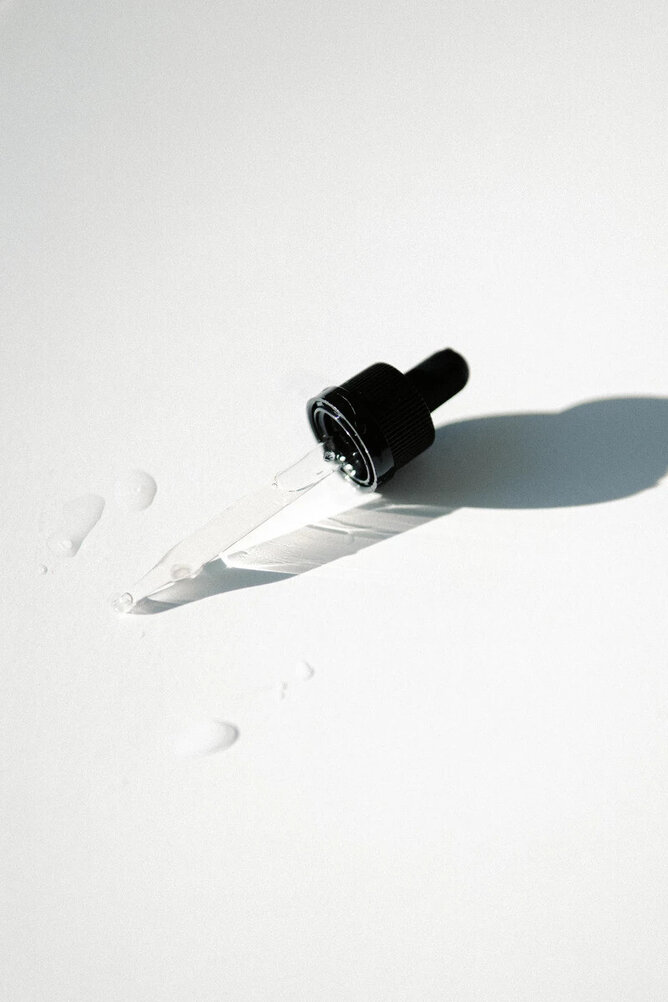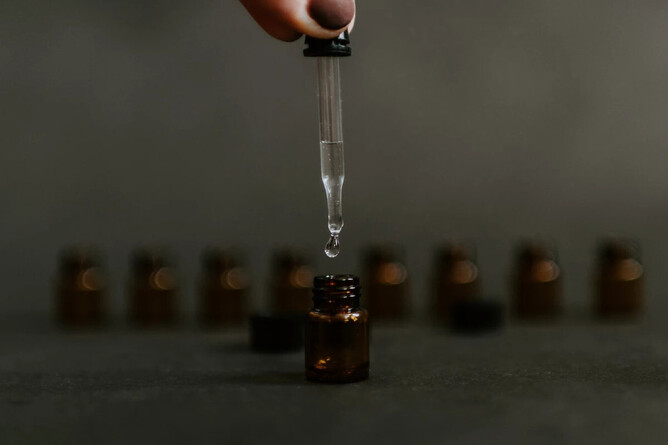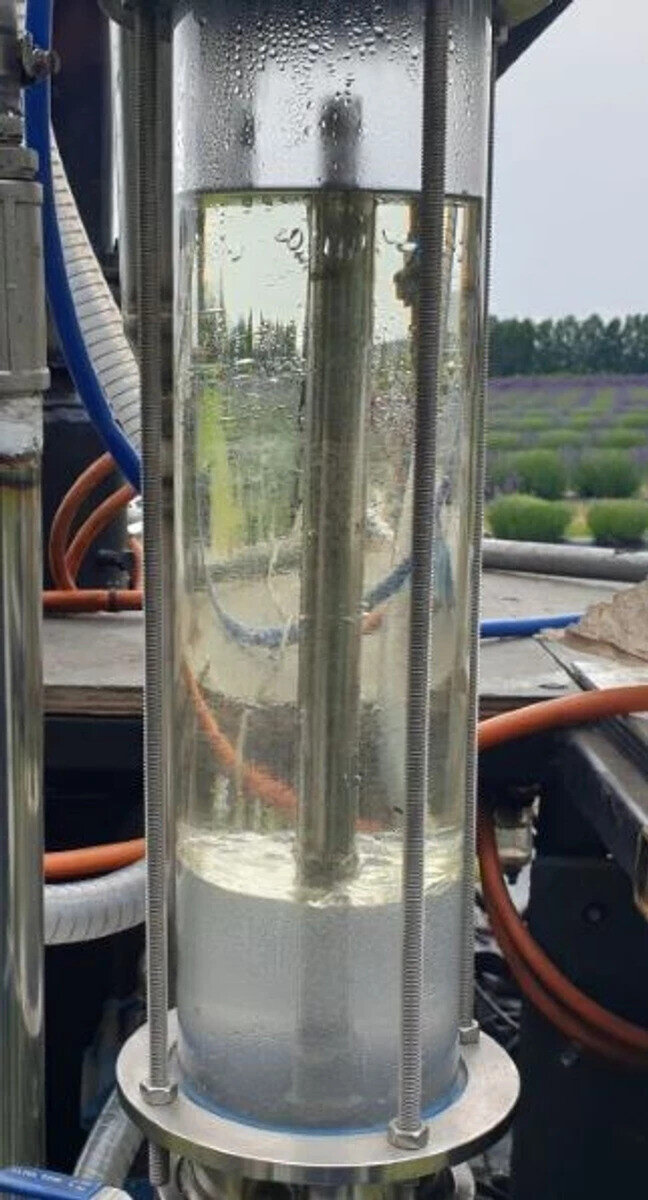Lavender oil is an essential oil obtained by distilling the lavender flowers. There are over 400 types of lavender species worldwide with different scents and qualities. An essential oil is "essential" in the sense that it contains the "essence of" the plant's characteristic fragrance.
How is lavender essential oil produced?
Pure lavender essential oil is produced through steam distillation. This is the same for many common essential oils, such as peppermint, tea tree, patchouli, rosemary and eucalyptus. Here in New Zealand, we typically harvest lavender blooms between December and February.
How does distillation work?
Once harvested, the cut lavender flowers and part of the stems are compacted into the still pot which sits over water. A boiler then heats the water and the resulting steam passes up through the plant material, vaporizing the volatile compounds. The hot lavender oil vapours flow through a coil, where the oil is cooled and condenses back to liquid. It is then collected in a holding tank. As the oil settles, it separates from the accompanying water, rising to the surface where it can be drawn off.
The recondensed water is called lavender hydrosol or lavender water and can be used in the production of other lavender products.
At Lavender Row we use a still designed by Paul Greaves of Estate Aromatics. He uses a unique steam under vacuum distillation process. By actively working the still temperature and vacuum pressure levels, we can produce beautiful lavender oil faster without affecting the quality of the oil.
How long does lavender oil keep?
The shelf life of essential oils aren’t all the same – quality matters. At Lavender Row our essential oils are made from pure lavender plants.
Beware of bargain oils which may contain other cheaper oils mixed in or even synthetic oil. Some essential oils can be diluted with carrier oils which can reduce shelf life.
While lavender essential oil is not vulnerable to many of the usual culprits - yeast, mildew and mould - that often cause products to spoil, it can degrade from oxidation, light and heat. These external elements can impact the scent and therapeutic properties of your lavender essential oil.
Kept under the appropriate conditions lavender essential oil can last at least 6 years. It can however, last much longer than that if the conditions are right.
How should you store lavender oil?
No matter what type of essential oil you have, the key to extending the shelf life is proper storage conditions. Thankfully, it’s relatively easy to keep your oils in good condition if you know how and where to put them.
When it comes to the bottle, you should use dark-coloured glass bottles to prevent UV light from penetrating the container. Most store-bought essential oils come in a glass bottle with an amber-coloured shade, which deflects UV light. Essential oils can degrade in plastic bottles, so homemade oils should always be poured into a glass container.
Although the dark amber glass thwarts UV light, it’s important to keep the bottles away from sunlight. Heat can speed up the oxidation process. To optimize the shelf life of your essential oils, store the bottle in a dark, dry place.
You should also keep the bottles away from flames, tightly capped and stored carefully to avoid oxidation and chemical evaporation. And don’t forget, if you have children, keep the oils out of reach of little hands!





